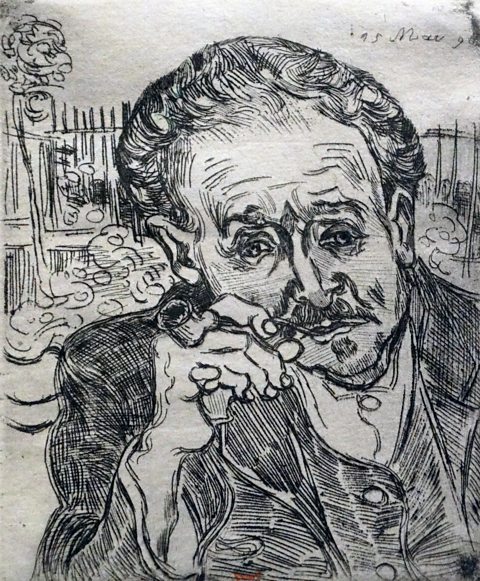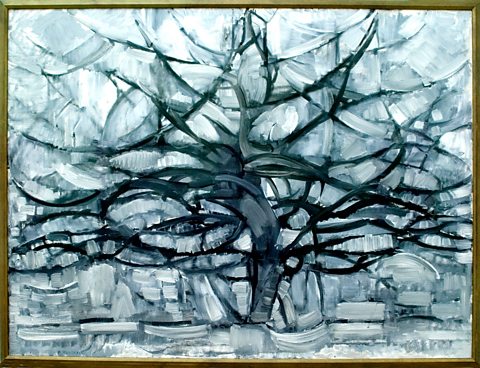Expressive lines
Lines can be added to an artwork using a range of different media such as pencil, charcoal, oil paint and watercolour. These different media will give the lines a different quality, they may be thicker or thinner, bold or smudged.
The way lines are created can be used to express emotions and to create mood.

In the etchingAn image made by cutting lines and marks into the surface of a printing plate. Man with a Pipe (Portrait of Dr Gachet) (1890) Van Gogh has used a range of bolder, thicker lines to define the outline of the subject.
Short, dark, straight lines at different angles show the jacket and waistcoat and shorter, wispier lines show the texture of hair.
Heavy, wavy lines around the forehead and eyes make the subject look thoughtful or troubled. These are matched by the contour lines that show his hands and clothing.


In Head of a Young Woman with Tousled Hair (c.1508) Leonardo Da Vinci uses expressive lines to give the impression that the young woman in his painting has long, flowing hair. This has been achieved by using only a few, expressive lines rather than realistically showing the appearance of her hair.
Compare that to the intricate tone and shading in the face of the young woman to see how effective even only a few lines can be.
Both these techniques are very different but both express a sense of softness and calm.


The Grey Tree (Piet Mondrian, 1912) shows its subject using very expressive lines of paint. Mondrian does not try and paint the tree realistically.
The bold lines cross in all different directions in a way that suggests the overlapping branches of a tree. They also clearly express the painter’s technique - it is easy to imagine the movement of his brushes and the energy he put into his work.
These expressive lines create a dynamic and energetic effect.
